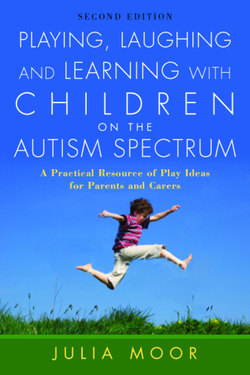Читать книгу Playing, Laughing and Learning with Children on the Autism Spectrum - Julia Moor - Страница 11
На сайте Литреса книга снята с продажи.
How do you try to ‘share space’ with a child with autism?
ОглавлениеBefore you can attempt to interact with your child at a level that might be called joint play, you need to bring about a realization in him that no matter how uncomfortable the feelings are, to share your space even for a few seconds is such fun and brings such benefits that it can override his drive to shut you out.
When parents become aware that their child has a reluctance to allow them into their ‘space’ (often noticeable around the age of 12–18 months, when we expect them to enjoy joint attention), we typically attempt the usual routes: making our voices extremely enthusiastic, physically pulling the child back towards us, talking louder (in case of a hearing problem) and usually resorting to the idea that ‘maybe he just wants to be on his own again’. Along the way some things might work, so thankfully we keep them up – rough-and-tumble, tickling, singing – they all seem to fleetingly bring about a response, but usually there is no method or structure to what we are doing. If you are lucky enough to have an early diagnosis then the deeper understanding as to why your child behaves this way may help – but where do you start?
